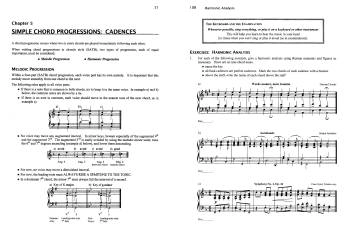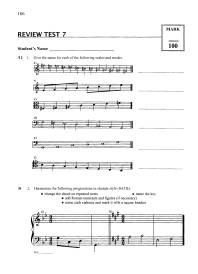Opens in a new window
Conservatory Canada Theory for Students - Book 4 - Fielder/Cook - Book

Additional Photos:



- Composer/Author: CONSERVATORY CANADA
- Instrumentation: THEORY
- Model # 139066
Authors: Steven Fielder, D. F. Cook
Format: Book (Spiral Bound)
Version: Theory Text
The study of Theory (rudiments and, later, harmony) is essential for a complete musical education. Musicians with a firm understanding of theoretical concepts will better understand and interpret the pieces they perform. Moreover, it will also enhance their musical skills in sight reading, ear training, keyboard harmony, and memorization.
Conservatory Canada's theory program is made up of a series of seven grades. The requirements for each grade are outlined in the Conservatory's official Theory Syllabus. Theory 1-3 is a graded study of rudiments, while Theory 5-7 is the study of harmony and counterpoint. Theory 4 -- a course unique to Conservatory Canada -- makes the bridge between advanced rudiments and a short introduction to the basic concepts of preliminary harmony.
This Theory 4 book reviews material from previous grades, and builds upon it by introducing new material in accordance with Conservatory Canada syllabus requirements. It is not intended to be a textbook on harmony. Rather, its purpose for theory students is to consolidate the foundations of rudiments already learned, and also to provide them with a continuation of advanced rudiments, along with a clear and concise introduction to the simple basis of chord structure and voice leading. Teachers of rudiments will find the content well within their grasp and experience.
Whenever possible, musical excerpts for examples and questions are drawn from actual compositions. However, it was sometimes necessary to make minor adaptations if the excerpt is theoretically beyond syllabus requirements. For all excerpts notated in short score (both keyboard and chorale style), the two staves are joined at the beginning by a curved (or curly) bracket with barlines extending through both staves. The only exception is for choral excerpts when the lyrics are written between the staves: here a straight bracket is used, and barlines are confined to each five-line staff so as not to interfere with they lyrics.
The workbook format offers plenty of graded exercises for each topic, with regular review tests of the material covered thus far. These Review Tests are intended to provide an informal, but regular, evaluation of the student's progress. Thus, the allotment of marks per question in the Review Test is not meant to reflect examination marking, but rather is designed to allow teachers total discretion in awarding marks for partial success and consistent effort.
Q & A
There are currently no questions for this product.
Reviews
There are currently no reviews for this product. Be the first to write one!




